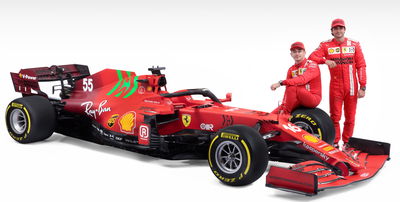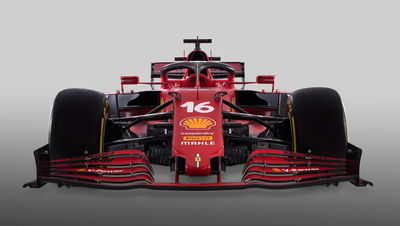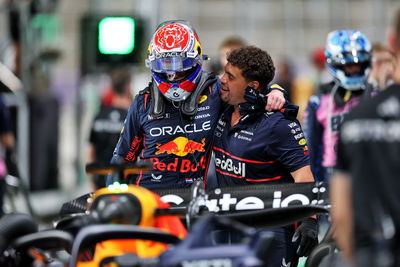Ferrari’s “radical” development of SF21 F1 car revealed
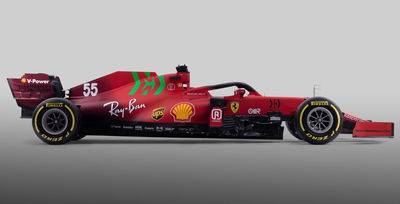
An extensively revised rear-end is among several “radical” changes Ferrari has focused on with the development of its SF21 Formula 1 car.
Ferrari is bidding to bounce back from its worst season in 40 years in 2020, in which it slumped to sixth place in the constructors’ championship, managing just three podium finishes.
As part of its push to recover downforce lost amid new rules for 2021 and to boost aerodynamic efficiency after struggling for performance with its draggy SF1000, Ferrari’s latest challenger has been radically overhauled at the rear-end, which includes a new engine, gearbox, and rear suspension.
SEE ALSO: Ferrari reveal SF21 F1 car with revised livery for 2021
“When we started the SF21 we had to choose right away which part of the car we’d give our attention to to make a radical change,” Ferrari chassis head Enrico Cardile explained at the launch of the SF21.
“We chose the posterior, creating a new transmission and new suspension. This, along with the work done by our power unit engineers gave us a much more tapered rear end compared to the SF1000.
“We also went over the cooling system. We increased the authority of the central radiator, and designed a more down-washing bodywork. Aerodynamics was one of the areas impacted by the changed regulations, intended to reduce the capacity of developing vertical downforce, making sure the tyres remain intact.
“This is why, when we started working on the car’s aerodynamics, we gave ourselves two objectives: on the one hand, increasing the aerodynamic charge lost due to the regulations, and on the other reducing drag.”
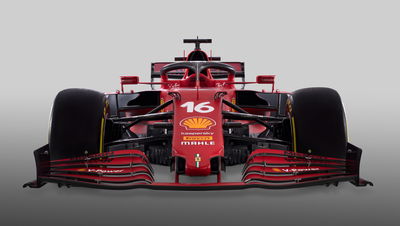
While Ferrari has spent its permitted development tokens at the rear of the car, the Italian squad has also made changes to the front-end, which features a new nose and revised front wing.
“The changes to the front part of the car were less radical, due to regulations,” Cardille added. “So we developed a new front wing that works coupled with a newly conceived nose, but the chassis and the suspensions are the same as the SF1000.
“These challenges certainly do not frighten us. We’ll face them as always, united with our feet on the ground, conscious that we’ll have to work a lot, and well, to honour the name we represent.”
Extensive work has also gone into the development of a brand new power unit for 2021. Ferrari engine boss Enrico Gualtieri revealed that estimations of the thermal efficiency of the internal combustion engine (ICE) point towards it being worth more than one-tenth of a second per lap this year.
“We continuously worked on the internal combustion engine, aiming to increase its thermal efficiency, with help also coming from our partner Shell which has led to an advantage estimated at over one tenth of a second per lap,” said Gualtieri.
“The turbo compressor has been revised to meet the needs of the motor and at the same time, we have planned to increase efficiency in the recovery of exhaust fumes.
“We’re also working on the hybrid system on the electronic part, trying to revise all its components and optimising them.
“The engine was born out of all of this. It has been teamwork, we have all worked together, including our excellent technical partners and our whole set of suppliers.
“We have put enormous energy into this project, but at the same time we’re already working hard on the power unit for 2022. It will debut next year, and it will be even more important because it will be with us for at least three more years of races.”
The SF21 will make its track debut on Thursday as part of a filming day in Bahrain ahead of the start of pre-season testing on Friday.
